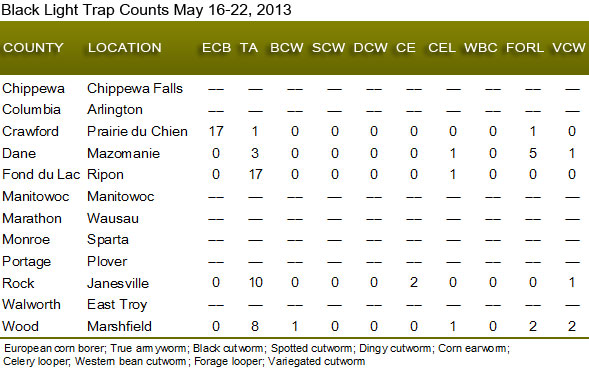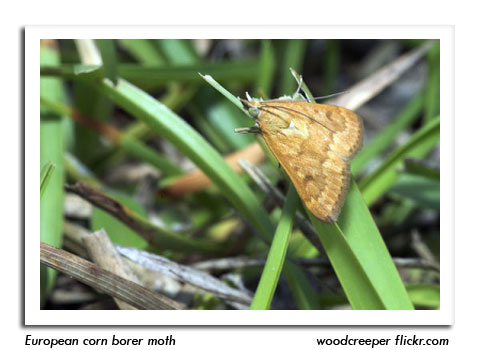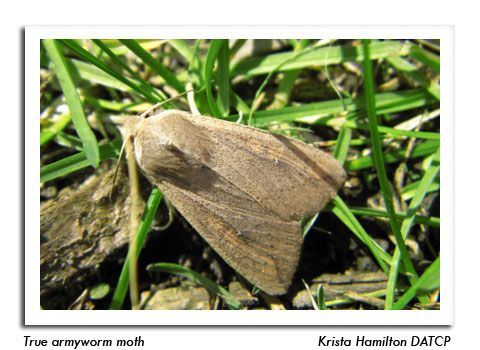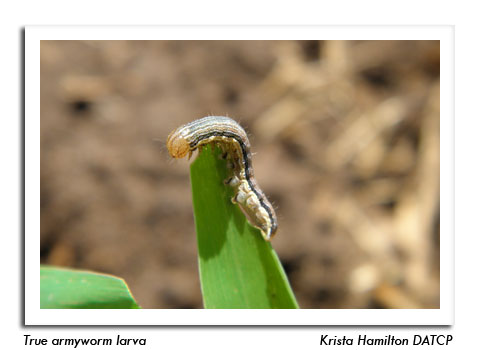
 |
|
|
Corn
Volume 58 Number 4 Date 05/23/2013 BLACK CUTWORM - The annual migration accelerated this week with the capture of 119 moths in 30 traps, the largest weekly count since moths began arriving on April 15. Larvae resulting from the spring flight are in the early instar stages and signs of their feeding (i.e. small pinholes in the leaves) should be detectable next week in emerging corn fields. Based on expected temperatures, the primary damage period is predicted to begin by May 28 in far southern Wisconsin and 1-2 weeks later in the central and northern areas. Close inspection of susceptible corn is recommended through the four-leaf stage. EUROPEAN CORN BORER - The first moths of the season were registered in the Prairie du Chien black light trap on May 20, marking the start of the spring flight. Most overwintered larvae are still in the pupal stage, which requires 10 days to complete at average temperatures of 65°F. Degree day accumulations in south-central and southwestern counties have surpassed 374 (modified base 50°F) and are now suitable for moth emergence. Larval abundance surveys performed last fall indicate an extremely low risk for severe infestations of first generation borers next month, but localized infestations in conventional corn fields and non-Bt refugia should be expected. TRUE ARMYWORM - No substantial flights have been documented this month, but moths are common in grassy vegetation and egg deposition is expected to be heavy at this time. Consultants and growers should anticipate larval armyworms appearing in fields in 2-3 weeks. -- Krista Hamilton, DATCP Entomologist 





|
|
|